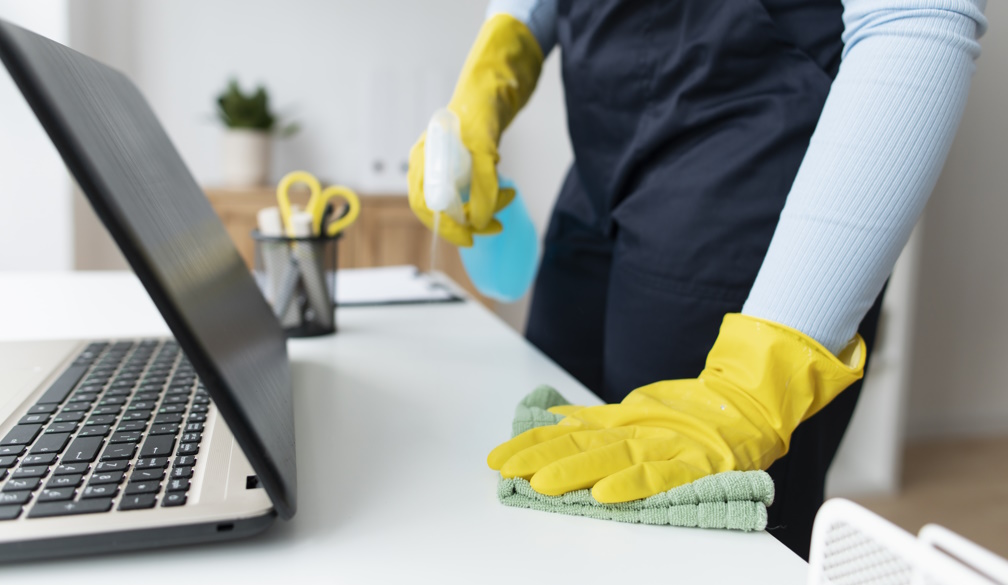Cleaning Services Melbourne: Professional Cleaning Company You Can Rely On
- Written by Guest Posting

Keeping a clean and healthy environment is vital for both residential and commercial spaces. Whether it’s your home, office, retail outlet, or industrial facility, cleanliness directly affects health, productivity, and overall comfort. That’s why choosing professional cleaning services Melbourne is essential for maintaining a hygienic and welcoming space.
A reliable cleaning service agency offers tailored cleaning solutions that suit your specific needs, using modern equipment and eco-friendly products to ensure spotless results every time.
Why Professional Cleaning Services Matter
Hiring a cleaning services company saves you valuable time and effort while delivering a level of cleanliness that is difficult to achieve with regular household cleaning. They follow structured cleaning methods, use high-grade disinfectants, and ensure consistent results that enhance both hygiene and aesthetics.
Comprehensive Cleaning for Homes and Businesses
One of the biggest advantages of professional cleaning services is the range of options available. Whether you need daily, weekly, or one-off cleaning, Melbourne’s experienced cleaning teams can design a plan that fits your schedule and budget.
Residential clients often request deep cleaning for kitchens, bathrooms, carpets, and upholstery. For businesses, cleaning services cover offices, retail spaces, healthcare centres, and industrial facilities. Every job is performed with precision, ensuring all areas — from floors to ceilings — are cleaned to the highest standard.
Office and Commercial Cleaning Solutions
For offices and corporate environments, cleanliness plays a key role in employee productivity and morale. A tidy workspace not only looks professional but also reduces the spread of illness. Professional cleaning services Melbourne include vacuuming, dusting, window cleaning, sanitising workstations, and disinfecting shared spaces such as kitchens and restrooms.
Regular cleaning ensures a fresh and healthy work environment, leaving a lasting impression on clients and visitors. Many cleaning agencies also provide flexible after-hours cleaning options, allowing businesses to operate without disruption.
Eco-Friendly Cleaning Practices
Modern cleaning companies are embracing environmentally responsible methods by using biodegradable, non-toxic cleaning agents that are safe for people and pets. Choosing a cleaning service agency that prioritises green cleaning demonstrates a commitment to sustainability and promotes healthier indoor air quality.
Eco-friendly cleaning reduces the risk of chemical exposure, allergic reactions, and environmental pollution — creating a safer, more comfortable environment for everyone. These practices also align with Melbourne’s growing focus on sustainable living and responsible business operations.
Customised Cleaning Plans
Every property is unique, and so are its cleaning needs. Reputable cleaning services companies in Melbourne take time to understand each client’s requirements before developing a detailed cleaning plan. Whether it’s a small apartment, a large corporate office, or a specialised facility like a medical centre, services are tailored to deliver optimal results.
Clients can choose from regular maintenance cleaning, end-of-lease cleaning, construction site clean-ups, or specialised sanitisation services. This flexibility ensures that every space receives the right level of attention, regardless of size or function.
Advanced Equipment and Trained Professionals
Professional cleaners use state-of-the-art equipment such as industrial vacuums, steam cleaners, and HEPA filtration systems to remove even the most stubborn dirt and allergens. Their expertise allows them to handle delicate surfaces, high-traffic areas, and challenging spaces efficiently.
Most cleaning service agencies invest in training programs that ensure their staff follow safety protocols and use cleaning chemicals correctly. This commitment to quality and safety provides peace of mind for clients, knowing their property is in capable hands.
Benefits of Hiring a Cleaning Services Company
Partnering with a professional cleaning company brings numerous benefits. It saves time, enhances hygiene, and extends the lifespan of furniture and flooring by preventing dust and grime buildup.
Clean spaces also improve mental wellbeing, promoting calmness and focus — especially important in work environments. In commercial properties, cleanliness directly impacts brand image, helping businesses project professionalism and reliability.
Additionally, outsourcing cleaning to experts eliminates the need to purchase cleaning equipment and supplies, reducing overhead costs for businesses.
Residential Cleaning: Comfort and Hygiene at Home
Homeowners across Melbourne are increasingly turning to professional cleaners for deep cleaning and regular maintenance. Services include dusting, mopping, vacuuming, kitchen and bathroom cleaning, and even detailed appliance cleaning.
A professional cleaner ensures that every corner of your home sparkles, creating a healthier living space for your family. Many companies also offer flexible scheduling, allowing you to book services weekly, fortnightly, or monthly based on your lifestyle and needs.
Reliable and Transparent Service
Reputable cleaning services companies pride themselves on transparency, professionalism, and customer satisfaction. They provide clear quotes, competitive pricing, and no hidden fees. Communication is key, and reliable cleaners arrive on time, equipped with everything needed to complete the job efficiently.
Regular quality checks and client feedback systems ensure consistent service standards. Whether you need a quick refresh or a comprehensive deep clean, professional cleaners in Melbourne deliver results you can see and trust.
Conclusion
Professional cleaning services Melbourne offer more than just cleanliness — they provide peace of mind. With expert techniques, advanced tools, and eco-friendly solutions, these companies transform homes and workplaces into hygienic, organised, and inviting spaces.
Choosing a trusted cleaning service agency ensures your property is maintained to the highest standard, while a reliable cleaning services company takes care of every detail so you can focus on what matters most.
Clean, fresh, and well-maintained spaces don’t just look better — they make life healthier and more enjoyable every day.



